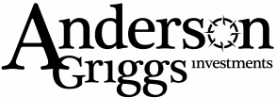|
Why is it that we, as investors, buy high and sell low? Why do we, time after time, take the latest bit of news from unreliable sources and use that news to justify the exchange of one investment for another? Why do we react to our instincts, instead of the facts, when the amount of money at risk is so large? Why is successful long-term investing so hard to accomplish? Martin Conrad, chief investment strategist for the private investment group C.I.G., places the blame for these errors of judgment directly on the stress caused by decision making of problems with uncertain outcomes. Mr. Conrad explains:
Stress is always present when a great deal is at stake. It impairs cognitive skills and warps decision making. Under pressure our instincts expressed through our emotions distort our reasoning and tend to push us toward the wishful thinking and mass conformity that temporarily reduce our anxiety but not our losses. In my earlier years as an investor I too fell under the spell of my emotions. Only after feeling the pain of many losses (both real and paper), did I develop and implement a set of rules to guide my investment process along less hazardous paths. We have shared these policies with all of you before, but, after last year’s bumpy road, believed it would be beneficial to revisit them. “10 Steps to Improve the Returns of Your Portfolio” is based on Dr. Paul Woolley’s 10-point manifesto. _ 10 Steps to Improve the Returns of Your Portfolio On May 25th, 2010, Dr. Paul Woolley, former head of the International Monetary Fund’s investment and borrowing activities, founder of the UK arm of Grantham, Mayo, van Otterloo & Co., LLC (GMO), and currently the Senior Fellow at the London School of Economics gave a lecture at the London School of Economics where he laid out ten policies that if adopted, could increase annual returns (after inflation) by 25% and long term returns by at least 50%. He addressed his comments to “Giant Funds” that he described as the world’s biggest public pension and charitable funds. However, we find that his 10-point manifesto will work just as well for individuals, offering the same, if not greater, potential return benefits to their portfolios. Step 1 – Adopt a long-term investment approach (future dividend flows), rather than momentum (short-term price change). Step one is all about a simple choice you have. You can decide to invest in a business as an owner, allowing the business to generate long-term wealth for you. Or you can decide to buy a piece of paper in hopes that someone will buy your paper at a higher price than what you paid for it. As the owner of a business you are entitled to receive all the earnings that your company can generate through its day to day operations. These earnings can be paid to you in either a check, or as a reinvestment towards the future growth of you business. For the past 100 years or so, businesses in the U.S. have generated about a 5% annual growth in capital through reinvested earnings, and in addition have paid about 4.5% a year in income to their owners. The funny thing is, the U.S. Stock Market has averaged an almost identical return with a 4.5% dividend yield and a 5% earnings growth. The problem for many shareholders in adopting this long term approach is that many of you measure the value of your business by the daily market price of your company’s shares. Thinking only about the short-term price swings, instead of business operation performance, will place you into the momentum camp. Resist it and you will be rewarded. Step 2 – Cap annual turnover of portfolios at 30% Step two is all about reinforcing step one with a monetary payoff. Turnover is a term used to describe how often you buy and sell securities in your portfolio. If every investment you own is bought and sold once a year your turnover is 100%. This turnover creates two costs, one is the cost of trading and the second is taxes. As a rule of thumb, a turnover of 100% will usually cost approximately 1% of your investment account due to trading costs. In addition, this 100% turnover rate costs about 1.8% of your investment account in short-term capital gains taxes, opposed to the 0.6% if taxed at the long-term capital gains rate. Think about this for a minute; if the market returned 10%, you would have to earn more than 12.8% just to break even with the market. It is possible, but highly unlikely. Step 3 – Understand that all tools now used to manage risk and return are based on the discredited theory of efficient markets. In one sentence Dr. Woolley is telling you to throw out all the academic theory on investment management that has been taught to and is believed by the majority of finance professionals over the past four decades. His only reason, which I find pretty appropriate, is that it doesn’t work. Modern Portfolio Theory (MPT), and its offshoot the Efficient Markets Hypothesis (EMH), may not ring a bell with you. So let’s just take two items that you, your advisor or consultant has to believe in, in order to place the “science” of portfolio management over your own common sense. MPT does not look at risk as a loss. Instead, it is only concerned with how much your portfolio’s market value changes over time. Whether this is a portfolio that appreciates or declines are unimportant. This measurement uses math to calculate and define risk as standard deviation or variance. EMH wants you to believe that the current market price reflects all that is known about the future. EMH also requires one additional belief; the past market returns, standard deviations and variance of the asset class returns relative to each other are the appropriate method used to measure future returns. If you believe that risk is a permanent loss of your investment dollars; if you believe that you cannot tell the future; And if you believe that sometimes your fellow investors react to their fear by selling cheaply or sometimes paying ridiculous prices for an investment then you know that using MPT and EMH to build your portfolio is not for you. Step 4 – Adopt a stable benchmark such as growth of GDP plus a risk premium. Why would you want to increase your bond holdings when they only pay 2%, and sell your bonds when they pay 10%? Why would you sell your stocks when the companies are earning 10% on your investment, and buy stocks when they are earning less than 4% on your investment? There is only a couple of reasons you would find yourself doing this. Either you are letting your emotions make your decisions or you have decided that a fixed asset allocation based on something other than value is the correct way to manage your portfolio. A benchmark used by the majority of institutional investors is simply a targeted return that has its base in the relative performance of asset classes. For you, mutual fund companies and in many cases your advisor has incorporated this benchmark approach. A target date fund with a fixed percentage of your portfolio in stocks, bonds and cash based on your age is one example. Your advisor may incorporate this by creating an “investment policy statement” allocating your portfolio over various asset classes with predetermined rebalancing dates. For most of us, a benchmark to a set asset allocation is unimportant. What is more likely is that our benchmark is liability driven. These liability driven benchmarks are stated as goals, such as having enough money available to pay for a wedding or a college education. For others it is an unknown quantity so an arbitrary benchmark is set, usually stated as a rate of return earned over a long period of time. Most of us are pretty good at setting our benchmarks. What we are not good at is keeping those benchmarks on the top of our minds when we make changes in our investment accounts. Step 5 – Don’t Pay Performance Fees. Performance fees are something many of us may not be familiar with as individual investors. They are primarily employed by portfolio managers of hedge funds, and are simply an extra fee (usually 20%) that may be charged to the investors of the fund when the fund outperforms a certain level of return. In theory you may look at this and find it justifiable. “My manager did great this quarter and outperformed the market by 10% so I see nothing wrong with him taking a portion of those higher returns for his outperformance…” Despite the fact that fees are always dilutive to returns, and any individual investor should know what fees they are paying and try to limit them as much as possible, the performance fee is quite a conflict of interest between the manager and the investor. Why would this be a conflict of interest when the manager is only trying to do a good job and outperform his benchmark? Well it is money that that portfolio manager either makes, or doesn’t make. 20% is a very large bonus paycheck. The portfolio manager wants that bonus. When the only way to receive that bonus is to outperform, you can see where taking additional risk and shooting for the moon with investment funds that are not personally theirs could be a problem. So if you have interest in some of these “Giant Funds” Dr. Woolley speaks of, these pension and charitable funds, do some homework. Find out if any of the investments are held where performance fees are employed, and start asking if those fees are justifiable. Step 6 – Do not engage in alternative investments – Hedge Funds, Private Equity, Commodities. These three asset classes may not be as familiar to us as individual investors; again however, if you have interest in the Giant Funds, these “hot investments of today” will most likely be present. This again comes back to risk. We already spoke about the excessive risk employed in hedge funds due to the performance fee conflict of interest. One of the largest risks involved in all three of these is the use of leverage (borrowed money). Hedge funds will use leverage seeking outperformance. Leverage is the bread and butter of private equity, which is already by nature a high risk investment and subject to trading within illiquid markets. And although commodities trading use to be highly tied to supply and demand of the commodities themselves, it has now become a betting booth business, employing leverage to such amounts that the underlying commodity is never truthfully represented. The fast swings in commodities’ prices are detrimental to a long-term “investment” mentality. Finally, leading us to point 7 of Dr. Woolley’s manifesto, transparency within private equity and associated investment vehicles is next to nonexistent. Although what is owned within these vehicles may be known, the amount paid for and the “carried value” of the underlying assets is known only to the seller and the buyer, but rarely known by the secondary investors. Step 7 – Insist on total transparency of agents’ strategies. Would you like to know how the person you have hired to manage your investments is doing it? Would you like to know what he is doing with your money, and where your money is being invested? Or would you rather be in the dark, and settle for simple assurances? When asked like that I do not believe anyone would answer be in the dark. It’s the same as giving someone on the street $10 because he said he will be back here in 2 hours to give you $20. Can you answer those questions now? You need to be in agreement with your investment professional. There needs to be a reason for you to use your money for company ownership, or to lend your money out and charge interest. This keeps you from joining the “buy high sell low club”. That reason should be meaningful and accepted by you. But if you do not understand and know what you own (your investments), how will you ever gain the confidence needed to make rational investment decisions? Lack of transparency is one of the most important factors involved in investment fraud and Ponzi schemes. Step 8 - Everything in the portfolio should be traded on a public exchange. This may seem like a minor point to most individuals as most of you will never control a portfolio so large it would benefit from the use of a Dark Pool broker or seek to purchase a CDS, CDO or any of the other alphabet soup products that Dr. Woolley’s comments are intended for. Yet it is highly likely that you will at one time or another be approached by your broker or financial advisor to purchase a previously issued corporate bond. One of the better sales techniques they use is to tell you that one of their firm’s clients had to raise money quickly and sold their bond at a bargain price. Because of this he or she can give you, their favorite client, a special deal. Most financial advisors sell bonds already owned by their firm. They have a description of the bond and a markup (commission) they could earn if they sold you the bond. Maybe, just maybe, selling you the bond rewards the salesman with a little more commission and possibly a little lower return for you. Without the bond trading on a public exchange, how would you know if this “special deal” was really “special”? Step 9 - Secure full transparency of banking service costs incurred by companies you invest in. This step is addressing agent fees for banking services that are hidden in corporate earnings. For you the step should be restated as “Secure full transparency of investment costs and fees incurred in the management of your portfolio”. I would venture to say that only 1 in 100 individual investors who use mutual funds or annuities know how much they are paying annually due to fees, commissions and investment activity operating costs of their funds. You can find out if you know where to look. If you are a self-directed investor take the effort to find out. If you use the assistance of a financial advisor then demand full disclosure of all costs, not just at the beginning of your relationship, but throughout the duration (annually). Is it worth while? For the year ending December 31, 2009, the average gross expense ratio of the 26,228 mutual funds in the Morningstar Principia database was 2.08% Step 10 - Provide full disclosure of compliance with these policies. If you have taken the time to set rules for the management of your portfolio, then you should prove to yourself, or your advisor should prove to you that the rules you set are being followed. This ends our discussion of Dr. Woolley’s ten steps. I wanted to send a special thank you to him and his associates at The Paul Woolley Centre for the Study of Capital Market Dysfunctionality. Their main objective is “to produce and disseminate high-quality research relating to understanding the workings of capital markets and the social efficiency of allocations achieved in these markets”. Dr. Woolley’s Ten Steps is one step that meets this objective. Until next time, Kendall J. Anderson, CFA Comments are closed.
|
Kendall J. Anderson, CFA, Founder
Justin T. Anderson, President
Categories
All
Archives
April 2024
|
|
Common Sense Investment Management for Intelligent Investors
|



 RSS Feed
RSS Feed